Full disclosure… this is my favorite of the Phase I Marvel movies; I enjoy it more than the Avengers and the original Iron Man (which I also love). Before this movie, I wasn’t even a huge Captain America fan… I read the comics where he showed up, but never his mainline series (and I wasn’t all that big into the Avengers proper back in the 80s and 90s when I was first into comics). I’m not sure I ever even owned a Captain America comic as a kid.
Yet, the strange thing about Captain America is that he’s both kind of unknown, but also immediately recognizable, to everyone. He was never in the realm of the DC greats, but there was something visually striking and unique to him that just sort of stuck with you. That or it was the corny made-for-TV movies back in the 70s (which starred Reb Brown of Space Mutiny… fame?), but those came out when I was a baby and I’ve never dared watch them as an adult.
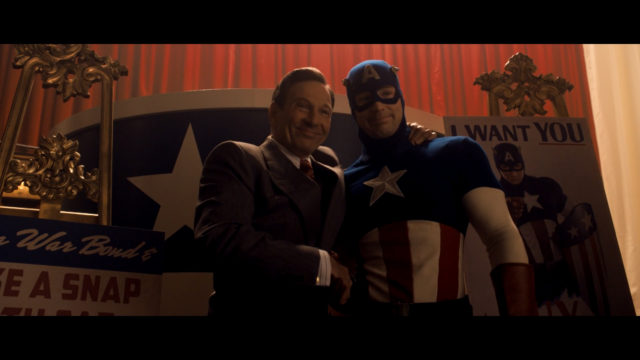
He’s also one of the oldest Marvel character, introduced back in 1940 (though dated in March 1941); not the oldest, that belongs to Namor, but part of a pantheon of characters and names that would go on to form the identity of Marvel a couple of decades later. His identity is tied to World War II (though introduced a year before America entered the war), and after the war he was mostly forgotten.
That being forgotten is one of the weird ways that Captain America as a property reflects Captain America the character. The movies are inspired by the comics heavily, both Captain America: The First Avenger and The Avengers. It even brings in Bucky and Red Skull. Captain America stopped publishing after the war after the comics market crashed and was mostly forgotten until being resurrected in Avengers #4 in 1964 (a return spoiled on the cover).
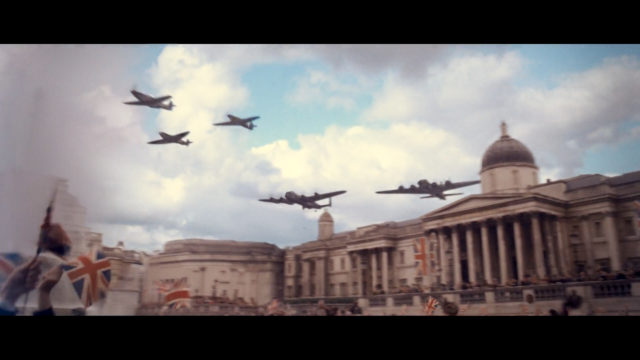
Maybe the reason I love this particular movie so much is that it’s a combination of some of my favorite genres: War Movies (specifically World War II movies) and Comic Book movies. I grew up watching old war movies… fare like Midway, Tora Tora Tora, The Longest Day. I loved stuff like Saving Private Ryan and I still think that Band of Brothers is one of the best TV series ever made. As for Comic Book movies… I don’t think I need to explain that, given I’m on review #5 for the MCU.
This is probably the most CGI-heavy MCU movie thus-far, but you just forget it because it’s done both well and often used with a bit more subtlety than the full CGI environments of Asgard or the basically everything of Iron Man 2. It’s still a blockbuster with comic book action… but how the movie uses it just feels smoother overall in how it flows.
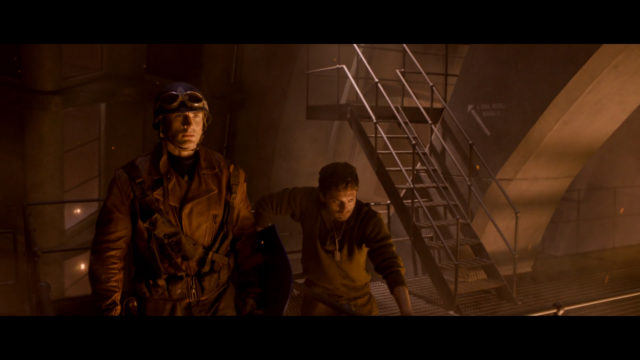
It’s also kind of strange that, with the Super Hero line having been around since 2012 (introduced with the Avengers), they’ve never gone back to revisit any of the old Marvel Cinematic Universe movies. While most of them would only give a playset or two… this movie is simply full of potential set ideas. The Hydra sub, Howard Stark’s plane, the Hydra tanks, the Valkyrie, Red Skull’s car, all of the old-timey cars… there are just so many potential things.
Sure, we’ve gotten some of those as tangents which are far more comic book inspired, but none of them have really felt as good (the Red Skull Hydra tank was just a boring set with a lot of quality control issues). But wouldn’t it be a lot more fun to get a Howling Commandos set, with them storming a Hydra base, where you can do the whole “battle sides” thing and it not to feel overly contrived?
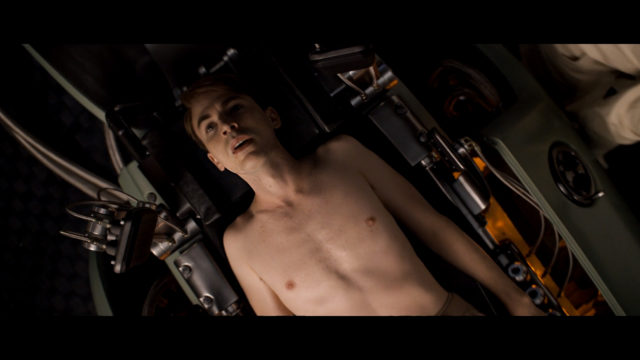
The First Avenger follows the normal three-act tone that all MCU movies have, though Captain America feels far more like Iron Man’s character growth and change arc than Thor’s three stories connected by one guy being in all of them. I liked Thor, but a lot of what happens is more about the personal journey of Thor, and a lot of the scenes were there to establish more character things about the character than to tell the overall Plot.
There is some of that in this movie as well, but building up Steve Rogers is woven throughout the backdrop of the war story they are trying to tell. This is also the first story that makes the stakes truly comic book in scope as well. We get the first McGuffin of the MCU in the Tesseract, which will go on to be a recurring item in multiple movies, and as we will find out in Thor the Dark World, the first Infinity Stone. It has Nazi’s, and classic Marvel villain Hydra, and huge stakes around a war!
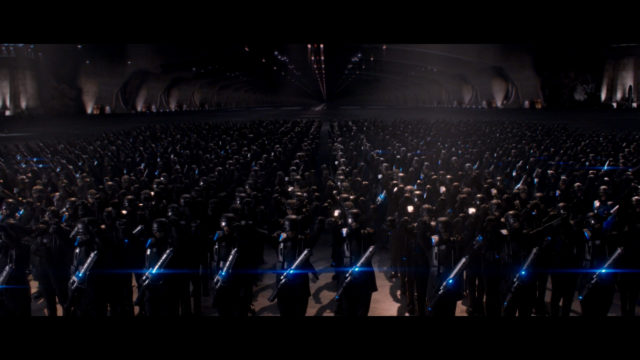
Except… the stakes in that case do fall kind of flat. We know, not just because of our own history tells us that the allies won this particular war and that the East Coast wasn’t reduced to blue glowy ash, but because the MCU movies haven’t alluded to that either. We know that the outcome of this movie will ultimately be, we just don’t know the how of it. That doesn’t make it any less fun to watch… it just makes it so no one is really going to buy the urgency and fear of our characters.
That being said, the writers, Christopher Markus and Stephen McFeely, do a fantastic job weaving actual history into the very fictional history of this comic book story. I was particularly amused with the idea that the Nazis invaded Norway to look for the Tesseract, and that it was “unauthorized” and had to be covered up. These two writers are responsible for some of the best films in the whole series (all three Captain America films and Infinity War… as well as Endgame) they sort of set the bar with what the MCU could be. Of course, they did also write Thor: The Dark World, but since they created the Peggy Carter TV show I’ll give them a bit of a mulligan on that.
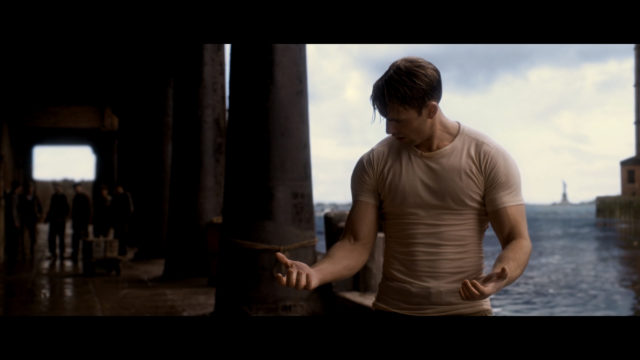
Casting has long been the strength of the MCU, even after a touch of a shaky start. Robert Downey Jr. as Tony Stark is still probably the most inspired casting of all time, and Chris Hemsworth as Thor was just a great choice. Their secondary character casting has also been great, bringing in characters like JARVIS, Pepper Potts, Black Widow, Happy Hogan, Syf and the Warriors Three, and Darcy in the past few films.
That being said… with the benefit of watching back at all of the movies and seeing exactly the kind of person he is, Chris Evans as Steve Rogers may be the single most perfect casting they’ve ever done. I’m still firmly convinced that they actually cast Steve Rogers to play Chris Evans in real life, doing things like helping women up the stairs at awards shows, driving civic engagement, and being pretty fun to follow on social media. Which is what makes it kind of funny that he was originally unsure about the role, since it wasn’t a comedy role which he’d defined his career on up to that point.
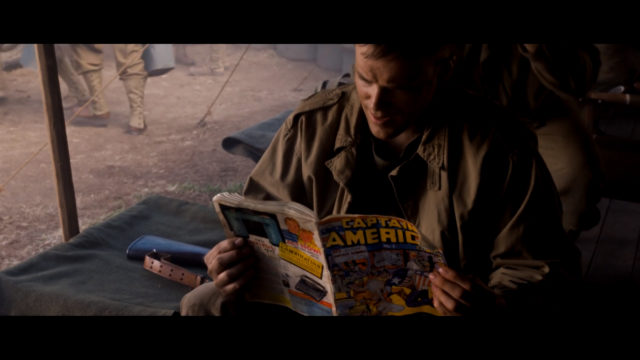
Chris Evans was unique in the MCU, since he’d already played not just a superhero in a movie, but a Marvel Superhero… having played Johnny Storm a.k.a. The Human Torch in the Fantastic Four movies done by Fox back in the early 2000s. The movies were… not good… but he was actually a great casting of that particular character, getting the cocky hotheadedness down to an absolute T. Or, you know, you may remember him from Not Another Teen Movie, where we wore some whipped cream and a banana… and nothing else.
Of course, part of the magic of Steve Rogers as a character is that, unlike most of the others… Captain America isn’t so much an identity as just a facet of his personality. It’s not hiding anything, it’s more like the serum… it’s him, amplified. Take of the mask, he’s still Cap. And there’s a wonderful naivety and innocence to the character that Evans does so incredibly well. I mean, that whole fondue joke is both funny and character building, and that’s pretty hard to do. Or the pain after Bucky dies and he’s trying to drink away the pain, and can’t get drunk because of the effect the serum has had on him… all of these little things woven into the story that build up Captain America.
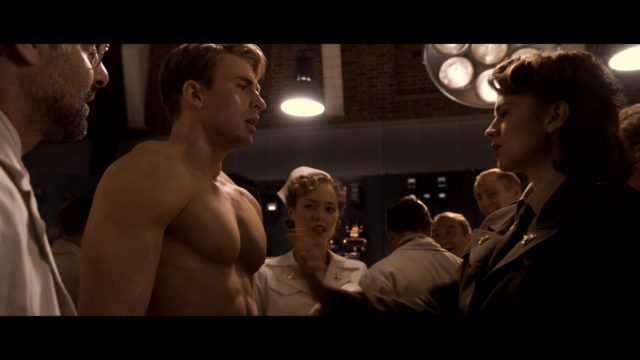
As good as Evans is as Captain America, Hayley Atwell is just as good in the role of Peggy Carter. She is, by a wide margin, the best female character that the Marvel Cinematic Universe has given us until that point, and will remain one of its best despite never being a main character in another movie (her spin-off show ran for two seasons and is woefully underrated). She is Captain America’s equal as a character, and a lot more forceful and strong, controlling her own agency throughout the movie.
What’s more, the chemistry between the two of them is just electric, in a way that we haven’t seen in any other Marvel movie. There are plenty of emotional moments in the movies, but nothing, not even the events of Infinity War, have quite the emotional punch that the end conversation between the Peggy and Steve.
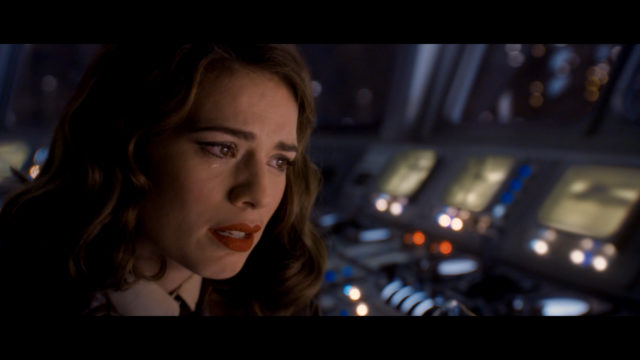
The two of them talking about rescheduling a date while they are both keenly aware that Steve in moments away from sacrificing himself, staying strong in the face of it, and the heartbreak on Peggy’s face when she loses contact… just… right in the feels. Cap succeeds where none of the other MCU movies have in giving us a romance that feels both believable and earned, building slowly and never fulfilled.
The villain, unfortunately, is where this doesn’t work quite as well here. Red Skull is a foundation villain in the Marvel Universe, for the Avengers and a lot of the key members. Along with Loki, Ultron, and Thanos, he’s served as one of the main antagonists for the team, and Cap specifically, since their inception. Hugo Weaving is a great actor and has been a fantastic bad guy, and at first, it seems like he is going to be a force in the movie. The problem is that there is just not enough of him.
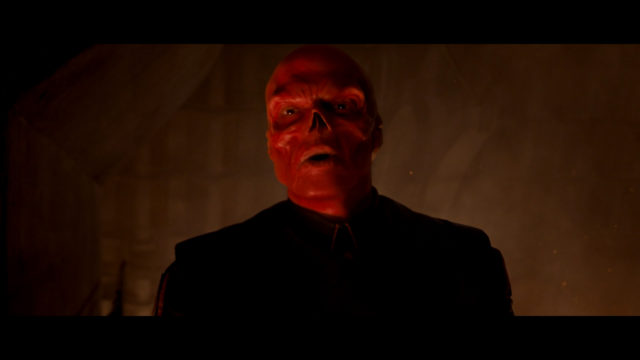
For the backstory, we only get a tiny bit in a short flashback (also, I’m not sure how good the German accents are in this movie, but I will guess not very) that talks about how he became the Red Skull. His motivations are clear and believable, he wants to take over the world for Hydra (now, also picture Pinky & the Brain as Red Skull and Zola). But how he got to that place, how he’s orchestrating it, or even how he’s funding it.
That’s actually one of my big problems with the movie… Hydra is just such an overwhelming force in it, with incredible technology superiority. Howard Stark is blown away by it, and he’s basically the smartest person in America from a tech perspective. We even see at certain points things that would be cutting edge today, and it feels flat. If it was stuff that would have been more period-accurate and just ramped up (like most of the vehicles we saw Hydra with), it would have been awesome… but too often it felt beyond that, like the energy containers and the lasers.
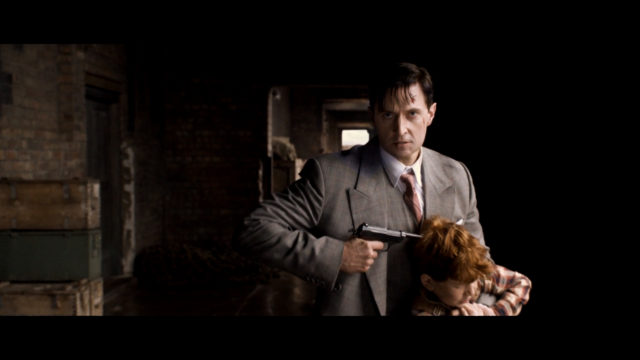
A few of them I could see, but Hydra seemingly had tens of thousands of disposable grunts and guns to go with them. At times, the stuff did seem period accurate, like the factory itself that Zola was using and the cars. At others, it was just too far past, like the Valkyrie with its LCD screens and movie radar. I get being technologically advanced, but it shouldn’t have felt advanced for today.
None of that takes away from this being a great movie with great characters. The secondary casting is among the best, with Howard Stark playing a prominent role, the Howling Commandos making an appearance, and Tommy Lee Jones playing Colonel Tommy Lee Jones. Sebastian Stan as Bucky is particularly good, building a fantastic and positive friendship between two men (and a popular ship among some fans that I can also get onboard with). Of course, if you know the comics, Bucky met a rather explody end before emerging as a certain brainwashed guy with a robot arm.
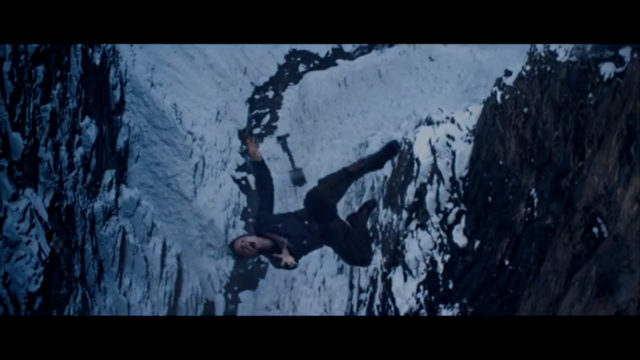
As I mentioned earlier, the CGI in this movie is among some of the best. The tiny rogers stuff, especially, is just eerie and believable. That they could get this level of work done back in 2011 is pretty amazing, and you see Marvel perfect it well over the years with Ant-Man, Captain America: Civil War, and Captain Marvel.
There are times where it feels a bit off, for some reason when Bucky is involved. At the beginning of the movie, when Bucky is standing with the Stark Expo in the background, it looks like the kind of work you’d see in a fan green screen YouTube video. Later on, when he falls off the train, we’re getting to some Robocop level bad work with him falling into that ravine.
Outside of the Bucky stuff, though, the CGI effect works because it’s usually kept closer to the characters and action. The fights in particular, feel and flow better in this, compared to Thor, because the fighting we’re seeing is tight on on the characters, instead of at a distance and small. Of course, most of the fighting happens in a montage-y burst after Cap rescues the 107th soldiers that were imprisoned by the Red Skull, as they take it to Hydra and start wiping them out.
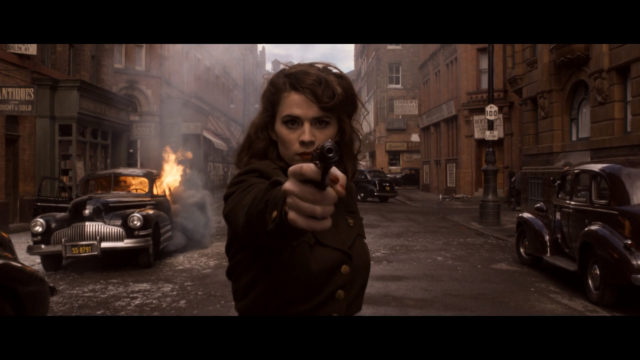
It seems like a smart choice that they sort of de-emphasized the action in the movie overall. There certainly are action scenes, but a lot of the movie was about character interaction and scenes, and building up who Cap was as a person and what his effect was on those around him.
There are just so many fantastic character scenes: Cap and Howard Stark figuring out the shield (and Peggy shooting it without hesitation because she’s mad at Steve), Steve and Bucky talking about how their fortunes had reversed, and Zola being interrogated by Colonel Two-Face. Joe Johnston did a great job directing this, so it’s kind of surprising that he basically vanished since then (though, to be fair, the Russos’ have been incredible in everything they’ve done since then).
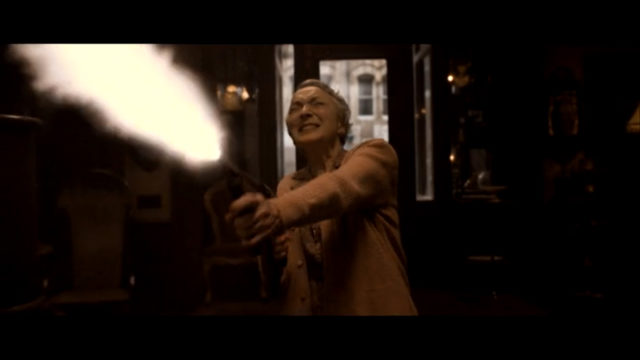
The First Avenger is probably one of the most watchable movies even if you’re not a fan of the comics or the overall MCU story. It can stand alone, even though the epilogue is just an introduction of Captain America into the modern day so he can be with the Avengers. Outside of that, though, you just have a solid self-contained story that will lead to some great sequels, but this is the movie you can watch without needing to know the other stories and characters from previous films.
That being said, there are a lot of references for fans of Comic Books, Marvel, and just history in general. In the Expo, you get another Golden Age hero, the Human Torch (who was an android and decidedly not played Chris Evans). The village where Red Skull find the Tesseract is the same one shown at the start of Thor. The Tesseract itself is modeled after the Cosmic Cube, a powerful artifact that both Red Skull and Thanos tried to gain many, many times in the comics.
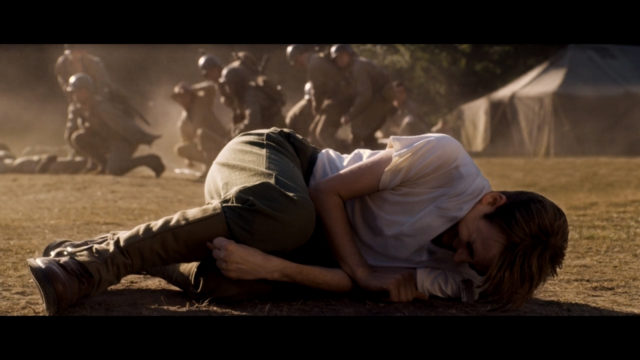
A fun little Easter Egg was less a reference to the comics, and more of a nod to another classic movie series, when Red Skull talks about Hitler “digging for trinkets in the desert.” Though, technically, that would have been a few years before this in the timeline, I like to imagine a world where Indiana Jones is just another super hero (and hopefully the snap erased all records of Kingdom of the Crystal Skull).
There are also a lot of word references in the Expo itself, with Tales to Astonish, Modern Marvels, and some other things get name dropped. We also get to see Stark’s flying car, which would become Lola in Agents of SHIELD, Vibranium (which would be a lot more important in Age of Ultron, Civil War, and Black Panther), and a lot of other little touches. Most importantly, these aren’t just little nods to the fans, but setting down a world and breadcrumbs for later stories.
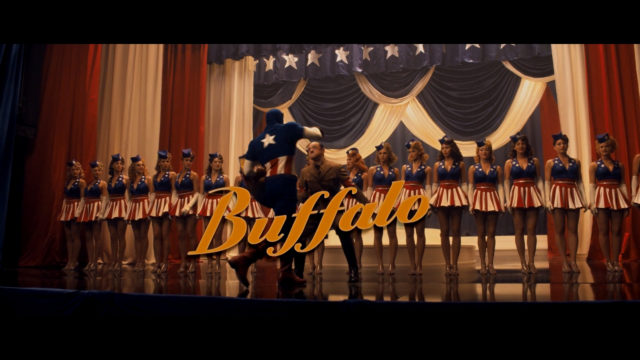
Of course, talking about all of the build up and the action of the first two-thirds of the movie, the last act is probably the weakest part of the movie (at least right up until the end). We’ve seen the overwhelming technology of the Red Skull, and he’s basically outwitted by a half dozen guys and one super soldier. Now, if Schmidt was just a guy, I’d get that… but he’s basically the evil version of what Steve is, and pumped with the same super juice.
The trap laid for the commandos is actually pretty sound, but what doesn’t make any sense is Zola actually being on there to spring the trap. Why not just send all the messages and then load the train with explosives, blowing it up? The whole thing is contrived as a way to “kill” Bucky and light the fire under the allies so they went after the Red Skull.
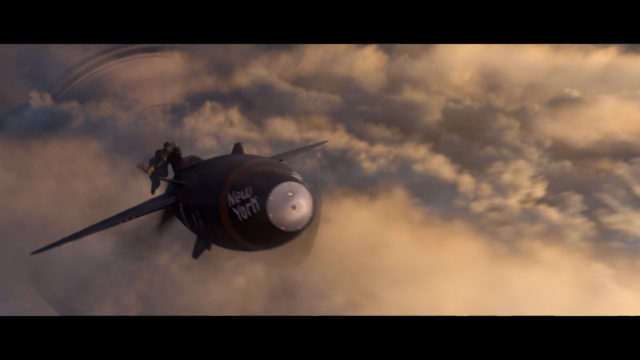
The first two acts take place over a few months or years (we only know that Red Skull went into Norway in 1942, which is kind of odd since the Reich invaded Norway in 1940), and presumably, the actual fighting with the army happens in late 1944 or early 1945. Europe was more in a lull for the war until Operation Overlord was started… and the Allies launched into mainland Europe starting with the D-Day landings. It would make sense for Bucky to have shipped out in 1942, but not get into the actual fighting until 1944, instead training in Europe for the invasion.
Americans weren’t heavily involved in the European theater before that (and, as a point of order… the 107th was a National Guard regiment that was deployed in WW2, but it was an anti-aircraft division). We also see a V-Day celebration at the end of the movie, which would be in 1945, and presumably was fairly close to Steve’s actions against Hydra. Of course, part of the issue here is that we only see the Army vs. Hydra, not the Army vs. the rest of the German armies, so it’s hard to get a sense of what’s happening overall.
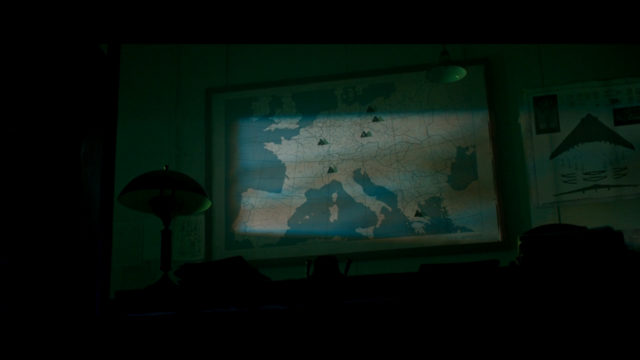
There are actually a lot of maps being shown as Captain America is launching his offensives and attacks, and they call out that the final base they attack is in the Alps. This sort of brings me to something that really bugs me about the movie, and I am about to get all sorts of war, geography, and comic book nerdy in this review.
Basically… the end sequence makes absolutely no sense whatsoever. They’re fighting the Red Skull at his base in the Alps, the European mountain range that runs from France, through Switzerland, Italy, Austria, Germany, and Slovenia. It was implied that most of the fighting that Caps forces were doing were in France and Germany, so let’s assume they were launching the attack in Southern Germany. Sending an infantry division to take a base to stop a plane and not calling for some support to, I don’t know, shoot it out of the sky, seems a bit short sighted.
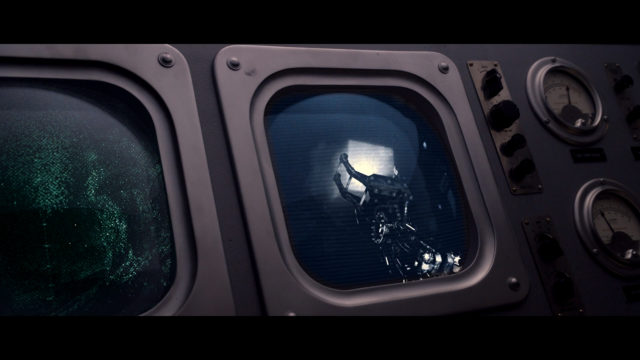
The problem is that the final problem set up is that the Allies are on a huge time crunch to get to Red Skull’s jet and stop him before he can start his bombing campaign, which will kick off by blowing up the East Coast in what I can only assume is a sort of an opposite-coast Lex Luthor real estate scam. Howard Stark says that he can do all of this in an hour, though that’s presumably launching it from his larger plane in those weird manned bombs.
It’d take longer than that for his jet to fly up and down the coast. We saw how fast they were going when Steve got on the jet/plane, and it didn’t seem to be overly faster than regular craft (fun fact, designs seem to be based on some stuff the Germans were actually working on, and jazzed up a bit – the Horten H.XVIII, an upsized version of the Horten Ho 229). While I’m thinking about it… shouldn’t the names on the bombs, which were conveniently labeled, be in German, not English?
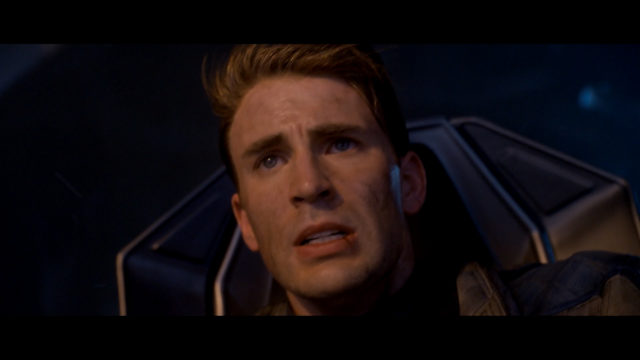
There’s a basic problem in that there is a lot of ocean between Europe and America. Worse… there’s actually a lot of Europe between the Alps and America. Which brings us to the biggest problems with everything that happens: time and distance. The fastest manned jet in history, the SR-71, took almost two hours to cross the Atlantic. The Valkyrie started in the Alps, heading to New York… if they were going that speed it was still an hour or more of flight before they even got to the ocean.
Yet once Steve goes through the whole fight with Red Skull, rips a hole in the universe and watches Skull get Tron’d to Vormir, he makes a choice within a couple of minutes to crash the plane into the ocean to stop the attack. The whole of the fight is maybe 10 minutes, and I don’t get the sense of urgency. Yes, there’s an autopilot, but he’s already eliminated the pilots for the bombs and can do the same for the rest of them (also, one of them was labeled Chicago, which is… not on the East Coast; apparently geography skills were not granted by the serum).
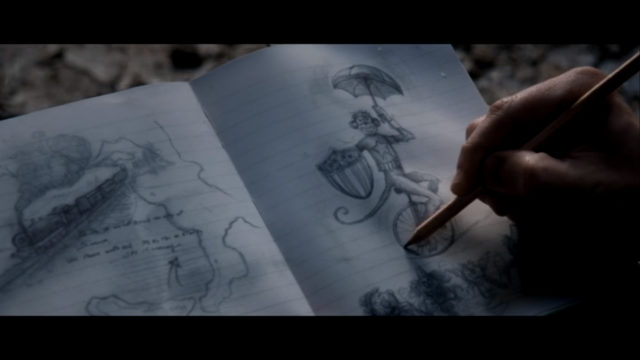
In truth, he would have had hours to talk to Peggy and the rest of the SRS and find a solution. If Colonel Samuel Gerard had called in air support, there should be dozens of planes moving to intercept the craft. Even if the Valkyrie was faster, it was flying across Europe and there were a lot of places that could have intercepted it and shot the jet down. Even with the autopilot, Steve has enough control to crash it into the ocean somewhere, so there should have been another choice.
So, time is weird, but distance is also weird. I mean… where exactly was he at the end that he was in the middle of nowhere and that could freeze him. At the start of the film, Rogers was found by a Russian oil team, and the only place that it could make a bit of sense would be the Barents sea. Which would be at exactly a right angle of flying from Europe to New York, over an ocean and near one ice to get popsicled into 2012.
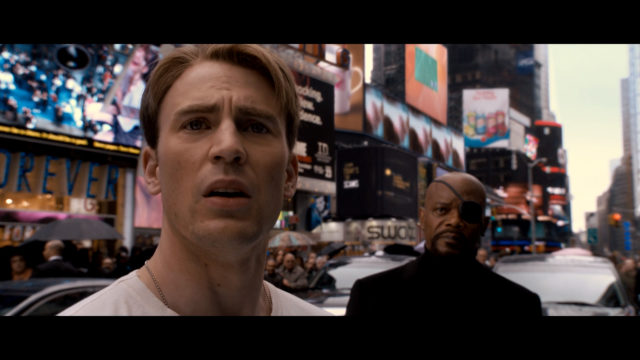
So the whole timing of it doesn’t make sense when you think about it, and the distance makes even less sense. You can go through and justify it away… the allies couldn’t catch it, the autopilot wouldn’t turn off… but it ultimately it all happens because the plot needed it to happen. Nothing wrong with that, but in a movie where they’d done such a good job of setting everything up, it gets a little bit too loose at the end.
I mean, I still love it, but it does hurt the stock of the movie somewhat; the actors are what ultimately save it, and I think their performance in this could have made a much weaker script at least a solid B of a film. That’s how good nearly everyone in this movie actually was. In spite of all the time/distance stuff, the emotional impact of Steve and Peggy talking at the end is gigantic and heartbreaking.
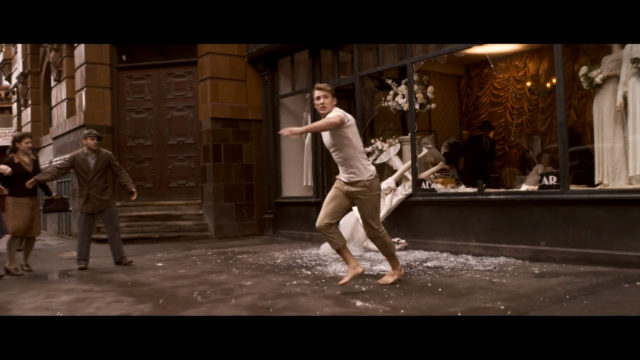
If that would have been the end, it would have been find, but there’s an epilogue scene, and the “hidden commercial” at the end that serves as the after-the-credits scene. If it looks familiar on a rewatch, it’s because it was in the opening of the Avengers, and is basically a poorly-edited clip reel from the next movie with a lot of flash cuts between scenes and a voice over from Fury.
In spite of the ending, this is my favorite of the Phase I movies, but it’s not without its flaws. That being said, it’s the strongest showing since the first one, and sets up the greatest films in the whole of the series. I really struggled with how to rank it, but the ending, sans the emotional hit, does bring it down slightly, so I settled on a four out of five. This is a great film that may require you to flip off your thinking history brain thing for awhile, but it holds up outstandingly well.
One Shot Review – A Funny Thing Happened on the Way to Thor’s Hammer
The One Shots will continue through the Phase I movies, and between I have a very hard time deciding if this one, or what comes with Iron Man 3, is the best, but they are certainly head and shoulders above all the others.
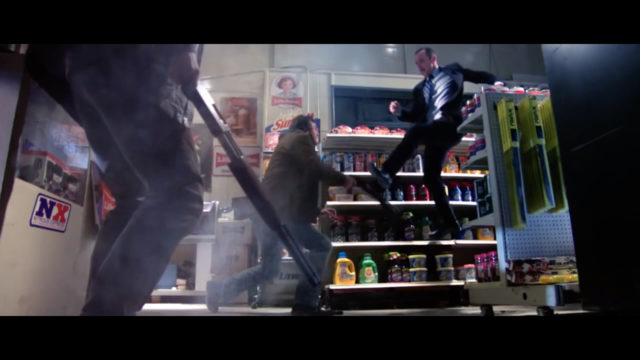
It’s pretty amazing to think that Coulson was supposed to be a one-off character in the first Iron Man, and would go on to be a critical part of these movies and the anchor of a TV show. Part of that is Clark Gregg being fantastic, but also just the nature of how the character works.
No idea how I noticed this, but his car lost its logo before he got to New Mexico. That or Acura wasn’t a sponsor yet, since this was filmed after Thor was. Time travel, alive and well early in the MCU. There’s also a tiny little Easter Egg… the fuel pump saying Roxxon on it (an evil-ish corporation in the Marvel universe). There’s a lot of connections between it and Thor and the Avengers, but it’s only ever been name-dropped in the movies as far as I’m aware.
Review Summary
Since there are going to be a lot of these reviews, and it’s nice to see how all of the movies stack up against one another, we’re going to add a little summary section for the Marvel Cinematic movies. When we’re all done, I’ll have an article that goes over my rankings of all the movies (which won’t necessarily reflect the overall quality of the movie in stars, etc, more of how it ranks within the total collection).
- Iron Man (2008) – 5 out of 5
- The Incredible Hulk (2008) – 2 out of 5
- Iron Man 2 (2010) – 3 out of 5
- Thor (2011) – 3 out of 5
- Captain America: The First Avenger (2011) – 4 out of 5
- The Avengers (2012)
- Iron Man 3 (2013)
- Thor: The Dark World (2013)
- Captain America: The Winter Soldier (2014)
- Guardian’s of the Galaxy (2014)
- Avengers: Age of Ultron (2015)
- Ant-Man (2015)
- Captain America: Civil War (2016)
- Doctor Strange (2016)
- Guardians of the Galaxy Vol. 2 (2017)
- Spider-Man: Homecoming (2017)
- Thor: Ragnarok (2017)
- Black Panther (2018)
- Avengers: Infinity War (2018)
- Ant-Man and the Wasp (2018)
- Captain Marvel (2019)
- Avengers: Endgame (2019)

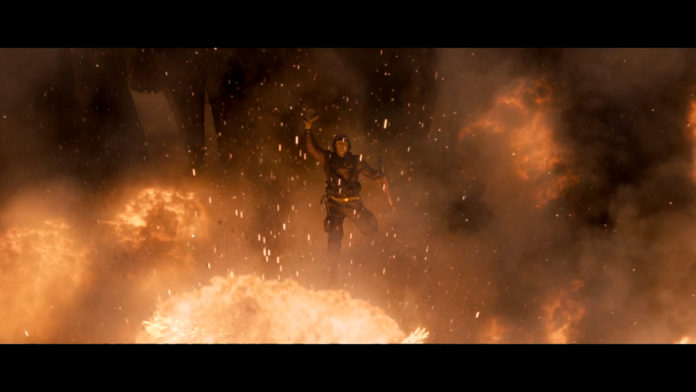








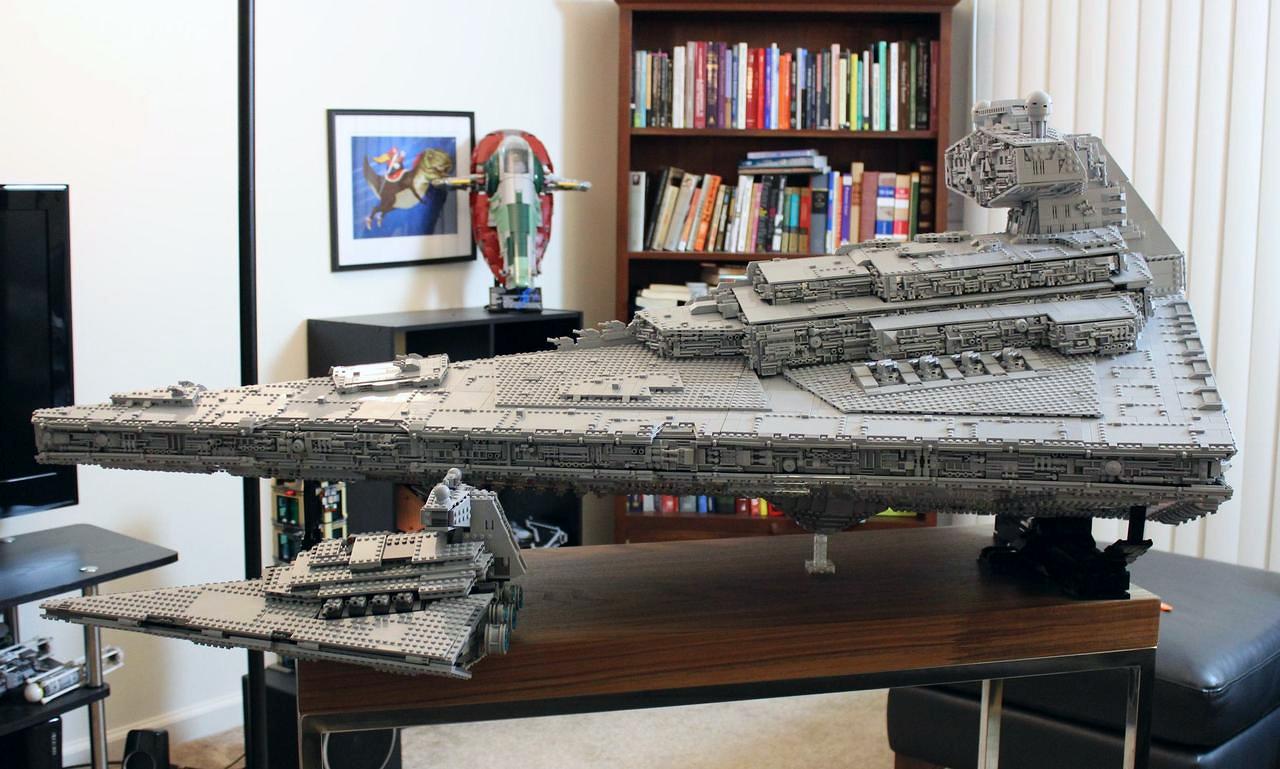

![[SDCC] Collider Reveals LEGO DC Super Heroes San Diego Comic Con Exclusive Set](https://www.fbtb.net/wp-content/uploads/2015/06/LEGO-Superman-SDCC.jpg)

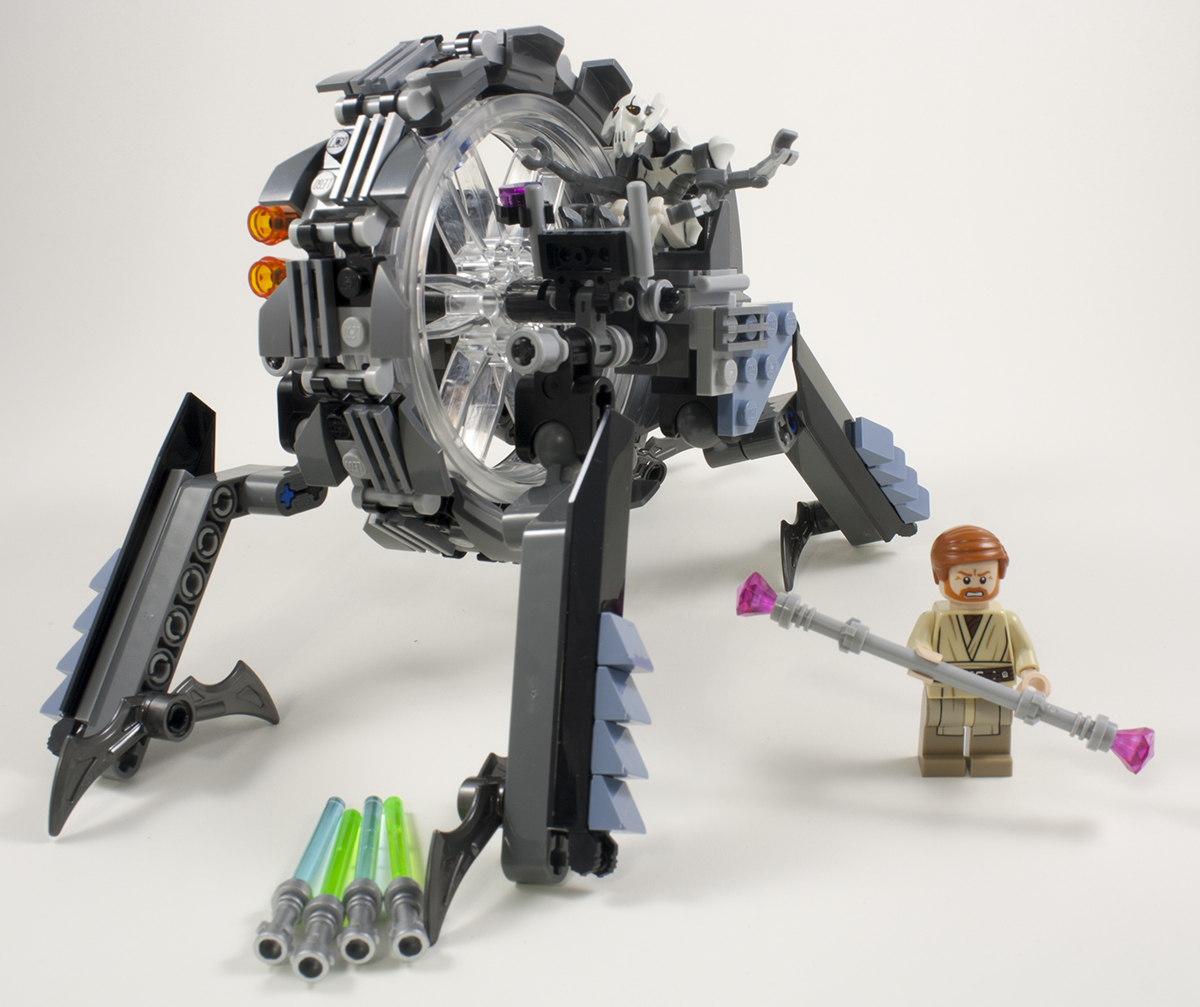

Really enjoying these reviews.
[…] Captain America: The First Avenger (2011) – 4 out of 5 […]